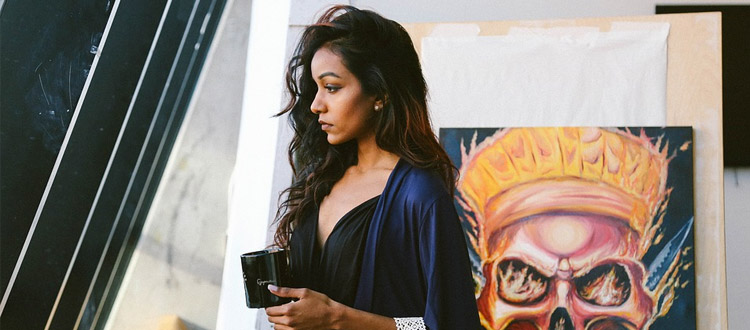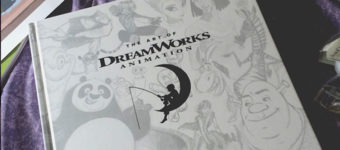
Intro To Costume Design For Concept Art
Entertainment has always featured costume designers from theater plays and movies up to present day TV and video games. Costume designers are necessary for imagining the style of characters and people in a creative production.
This style may be something simple like 1990s New York, or it may be very complex like a space mission to an alien planet. Artists get into the entertainment world because there really is no business like showbusiness. Specialties like costume design are just part of the magic required to bring something to the screen.
I’d like to cover a little about costume design and how it may affect your concept art practice. This post will not cover everything about costume design, but rather just the ideas that pertain to digital artists.
Matching A Character
Costumes are most often designed for people. It seems silly to clarify this, but some costumes are meant for large creatures and monsters that don’t conform to a typical human shape.
So when designing a costume for a character you’ll want to gather as much information as possible. What does this character enjoy? What are their personality traits? How do they behave? Favorite activities?
These questions are usually fleshed out by the time the costume designer has to work out ideas. And you really need to consider the character before you can design their costume.
Let’s say you have two characters who are sisters. One’s a very dignified and civil aristocrat while the other’s a tough-shelled biker outlaw. These two characters will be designed in very different, almost opposing outfits.
But setting and theme also play a role in the design process. Should these outfits match a classic 1700s style of attire? Or is this a sci-fi futuristic world? Again, these two settings will offer vastly different results for costume art.
Never be afraid of trying new things. All the best artists know that adventure is a big part of creating believable artwork.
This interview with vis dev artist Samantha Kallis is an incredible source of inspiration for new artists and pros alike.

Worlds and Moods
Every story has to set a tone for the world where it lives. Video games often have different worlds compared to kids movies, but the thematic style is always visible.
Take for example the character art of Adventure Time. This costume design surely follows a different process than Assassin’s Creed or God Of War.
A jungle environment like The Jungle Book is completely different than something like Toy Story. I recently checked out the Art of Jungle Book and it’s amazing to see how those artists created such realistic worlds and characters.

You can find so much quality inspiration just by studying existing projects. Reality is also full of costumes because we can’t all be nude in public(not yet).
I’ve always been a big fan of Pinterest because there’s a tag for everything. Lo and behold there’s one for costume concept art with 100+ different examples.
The beauty is that artistic style does not matter. A world’s mood is set by the visual designer or art director. You simply take that in and find inspiration wherever possible.
Think of all the different costumes someone could wear in a frozen arctic environment. This is your job as a costume designer and without some reference you’ll be stuck drawing the same stuff over and over.
Honestly the best way to match a mood is to fall in love with fashion. Costume designers really just create imaginary fashion trends. There are dozens of fashion blogs online that you can skim through, each with their own unique slant on the fashion world.
This interview with concept artist Claire Hummel has a bit about her process designing a costume for BioShock.
The more you study moods in existing works of art, the easier it’ll be to replicate moods in your own art. The difficulty is combining moods with character personalities to create a dazzling outfit every time.
Practicing Your Own Ideas
If you’re not familiar with matching character personalities then do some personal studies. These can be much more beneficial than you might realize, especially if you do them for extended periods of time.
One exercise is to redesign the costumes for existing characters based on your analysis of their personalities. Take your favorite character from a video game or cartoon series and redesign their clothes.
This is both really fun and very educational. After designing a few ideas you can post to art communities like /r/ImaginaryCharacters to get feedback.

The other natural method of practice is to design your own characters from scratch. This is a bit trickier because now you’re wearing the hat of a character designer and costume designer.
Although most character designers already have the ability to design costumes so it’s not much of a leap.
Many costume designers also have to behave like props designers when focusing on small costume accessories. Take a look at this concept art designed by Benedict Neoh.
It shows a mock space suit with a few different ornamentations for the helmet/hoodie. This follows some aspects of prop design geared towards costume work. So in general a costume artist should be well-rounded in many skillsets, just like all concept artists.
I still recommend practicing unique stuff as much as you can. Create your own characters, redesign others, and just try anything that works.
I also like the book Costume Design & Illustration made for artists working in film and video games. If you’re just starting out this might be a little over your head, but it will seriously up your costume design game when you’re ready for it.
It doesn’t matter where you start. Just get started and be willing to work hard. Put in the hours and recognize when you’re slacking.
If you study the work of other artists you’ll quickly build up a visual library of unique ideas. Keep working to design your own costumes from life as well. In time you’ll be surprised how quickly you can visualize ideas and put them down.
If you need a little more inspiration check out this intro video on costume design for concept art.












